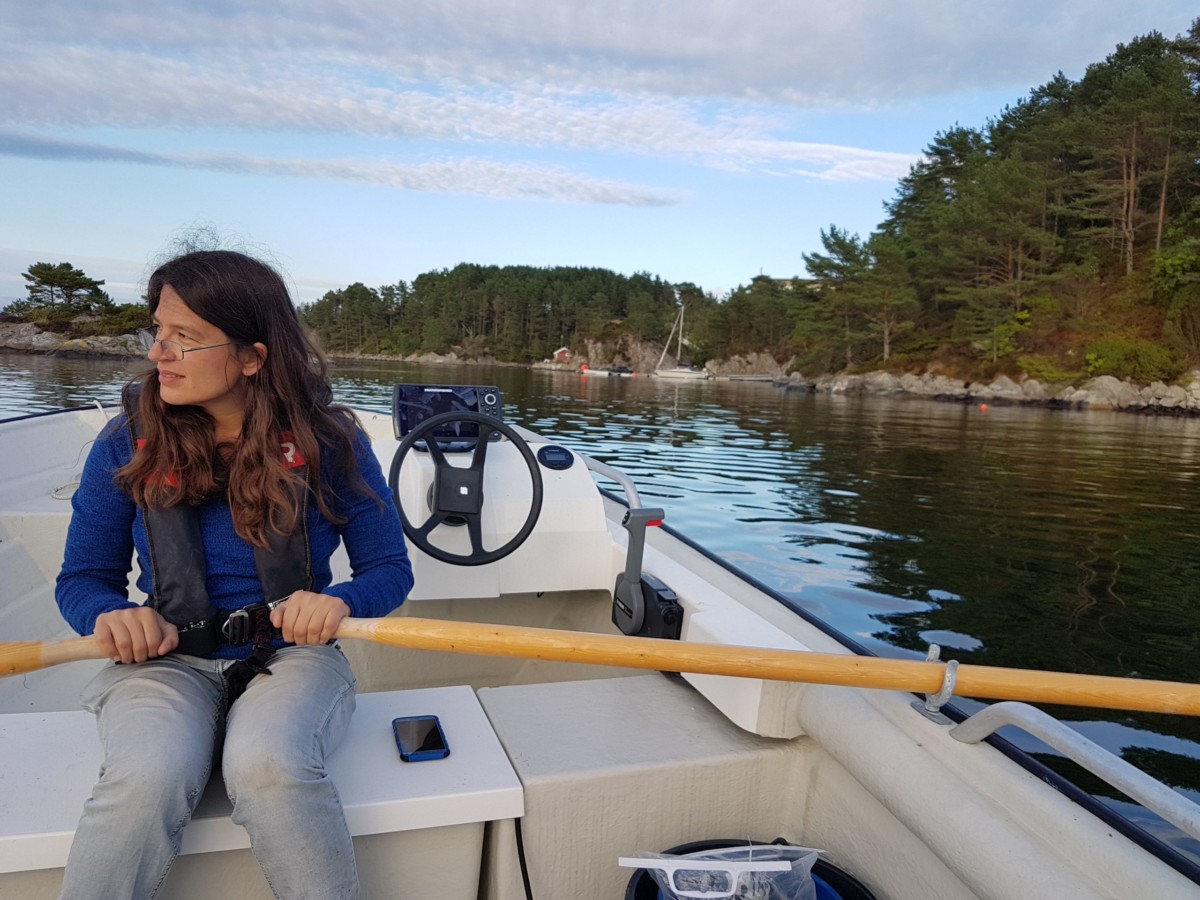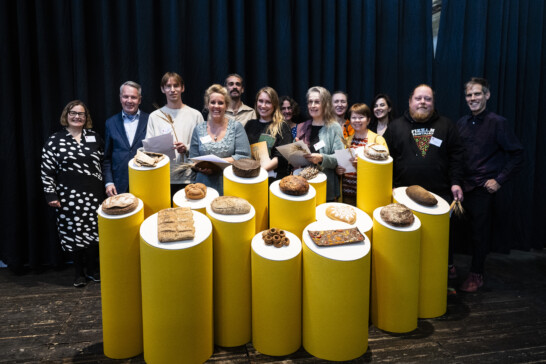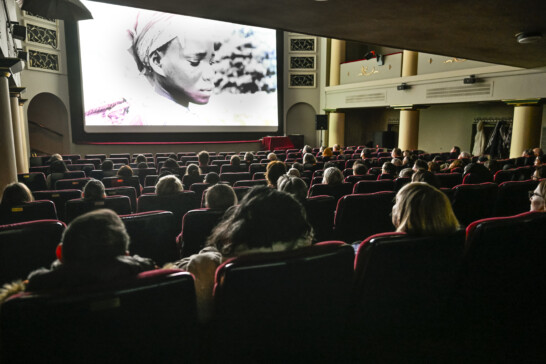News
Listening to fish – underwater noise and the social life of fish

This interview with marine biologist Karen de Jong in Bergen, Norway, continues the series conducted by artist Jana Winderen and Executive Director and curator at IHME Helsinki Paula Toppila. The idea for a series of online interviews came up when, at an early stage of our collaboration in 2019, Jana was thinking about staging a seminar to raise awareness of the current state of the Baltic Sea and other water systems. Instead of flying people in from abroad we decided to share their expertise in text form on our website.
Karen de Jong works in the Ecosystem Acoustics Group at the Institute of Marine Research, Bergen, Norway. Her research focuses on the effects of noise on aquatic life. She did her PhD on the effects of the social environment on the reproductive behaviour of fish, and her Postdoc research focused on the effects of noise on reproductive behaviour in gobies and cod.
Dream job – a biologist or a bum
PT: How did your interest in marine life get started? How did you decide you wanted to be a marine researcher?
KdJ: I wanted to be a biologist when I was about four. I always said that I want to be either a biologist or a bum. As long as I got to travel and look at nature I would be happy. My father took me into the garden to look at insects when I could just lie in his arms, that’s the main influence. My mother showed me that women can do what they like doing and succeed.
I was really interested in animal behaviour when I started my studies. I was first interested in birds, but in the Azores I had my first experience with fish, and I realized that fish are actually much easier to work with than birds if you want to study behaviour. It’s almost impossible to create a realistic environment for a bird in the lab, you need too much space for them to behave naturally. So that’s why I basically ended up with gobies: they’re really connected to the sea bottom, so they are very local, they don’t migrate or move around a lot and they can do all their behaviour in a relatively small amount of water.
JW: Are there gobies in Norway?
KdJ: Yes, gobies are a very large family of small marine fish and they live basically everywhere throughout Europe. In my PhD I worked with two-spotted gobies. Two-spotted gobies are especially interesting, because they actually switch sex roles. At the beginning of the season there are males competing for females, but at the end of the season a lot of the males disappear and the females compete for males. And you see how this affects their whole reproductive success.
In my postdoc research I look at how continuous noise could affect visual and acoustic signalling in fish. I found out that interestingly males still made a lot of sounds in noisy circumstances, but less than in silent circumstances, but females paid less attention to sounds. They decided who to mate with based more on visual display than acoustic display. Thus, there seems to be a difference in how males and females react to changes in the environment. After that, I scaled up from gobies to a more large-scale project with cod. And recently we have extended our research to zooplankton, and we are hoping to start looking at the effects of the noise of offshore wind.
Traditionally the focus of noise research in Norway has been on seismic surveys, which produce really loud blasts of noise that are used to survey the ocean floor for oil and construction. But now, with the extension of wind farms, we are also trying to look into the effects of more continuous sources of noise, such as wind farms and boats.
Singing, grunting and rumbling fish
JW: Cod, they make a sound with the drum muscles on their swim bladder. That’s what I’ve been going around saying all the time for the last fifteen years. That’s right, just checking?
KdJ: We know they have sound-producing muscles and there’s a correlation between the condition and the length of the male and the size of the muscles in the male, and this is less so for the female, so it’s very likely that these muscles have something to do with sound production. However, we don’t have direct evidence that these muscles are the main mechanism of sound production.
JW: Another thing I’ve also been walking around saying for years is this sound that they make when they go up in these spiral movements together, when they are mating. Do they make this rumbling sound then or at some other point? Because I have been recording all this really low-frequency kind of rumble.
KdJ: As far as I’ve seen the rumbling sound is more the male staying on the bottom and it may be more a territorial kind of behaviour. This is my impression, we haven’t got that far with the data yet. And when they go up together, then they do more the short grunt-like sounds. But then again, in gobies it is often the case that once they really start spawning they also do this rumble, so maybe we have just not seen it yet.
JW: When I was at The Institute of Marine Research in Austevoll in 2006, there were some cod in a pen ready to spawn, so I did some hydrophone recordings of them, to listen to what it sounds like so I could recognize them in the wild. I remember how they came up and they just sort of bumped the hydrophone with their nose and made the grunt.
KdJ: Yes, the grunting they do basically continuously. They do it when they fight and when they swim around and when they see something interesting. But when they swim up together during courtship and spawning, you hear more grunts. So it seems to be related to that as well. But I haven’t actually seen eggs being released. So it would be really interesting to see, when it’s not spawning season, do they still make sound? Because the papers that have described that they make sounds in the spawning season, these are in areas where they probably only are when they are spawning. Then if you only hear them during spawning it could be just because they are not there otherwise.
Visual and acoustic signalling
JW: What do you think, are gobies and cod dependent on hearing each other to communicate?
KdJ: For gobies it hasn’t been established that they can’t spawn without hearing each other. In my work I actually showed that females pay more attention to the visual communication, but of course we don’t know what happens if you completely stop them communicating acoustically. In the later stages of reproduction, they’re really close together, so they will still be able to feel each other make sounds, even if there is a lot of noise around. But I did find that females seem to base their decisions more on the visual than on the acoustic signals in noisy circumstances. So, females can switch modality, while the males, they did less acoustic signalling but not more visual, so they do not seem to switch modality completely.
Toad fish have these really impressive sounds that you can actually hear outside the water as well. Clara Amorim is working with them in Portugal. Her group showed that if they operate on the male so that they can’t sing, males don’t get any eggs at all. So in that case they are very dependent on sound. Yet probably it differs between species and depends on how much visual courtship they do, and probably also on the location: if the water is very murky, probably not much visual communication is possible, while the gobies live in very different kinds of surroundings. For two-spotted gobies, it is very obvious that visual communication is important. You actually see, when there’s more sunlight, they display more, they have these very colourful fins. But for sand gobies and painted gobies, for example, visual courtship may be somewhat less important.
JW: Toad fish, they’re very brown grey. You cannot see them because of that, you see all the other very colourful fish. But then you really hear them. I have a lot of recordings from these reefs.
KdJ: It really depends on the species, but, of course, there are also evolutionary patterns. There is a recent paper by Eric Parmentier. They also have a really active group on fish acoustics, and they took set out an evolutionary perspective on sound production in gobies. They show that in terms of evolution sound production is quite an old skill.
Generalizations contradict the true complexity of nature
KdJ: What I find weird is that people are so quick with generalizations even though we know so little. For example, our last paper by Karen Bussmann shows that wrasses make clicking sounds in the fjord. You can hear these sounds continuously in all the fjords, so a lot of people ask where they come from and nobody believes it’s a fish, because clicking sounds are associated mainly with invertebrates, like the pistol shrimp.
JW: This is what I’ve been asking all the time, I totally believe that there can be fish that make that sound, there’s other sources of this clicking sound that are not investigated enough.
KdJ: So much we don’t know yet, and it’s a pity people kind of close off avenues because they say it’s not happening. We have only started to discover what types of sound can be made by different animals.
JW: My experience based on all this travelling around and doing all the recordings support that. The character of the sounds varies a lot, they are different in different environments.
KdJ: There is one paper by Kasumyan from 2008 that gives a very nice overview of all kinds of different ways fish can produce sound; clicking bones, muscles, all kinds of different production mechanisms. It’s not like us or birds, for example, that have one way of producing sound, so you can kind of predict this sound comes from a specific family. It’s more like each species can develop new ways of producing sounds. I think it is a very exciting field.
Fish dialects and the salinity of the Baltic Sea
JW: Are there particular things in the Baltic Sea? I know that you haven’t really worked there, but some issues that you would like to, that we can relate to the Baltic Sea directly?
KdJ: That’s very interesting. I haven’t worked in the Baltic Sea, although I caught some gobies there once and recorded them afterwards. What’s very interesting I think, in the Baltic Sea, is that you have these species that live all over the Baltic, but you have specific subpopulations that live in the more brackish part and in the more salty part. And of course, it would be one of the things that would be really cool to figure out, whether these also produce different sounds, or less or more sound, because sound propagates differently in salt and brackish water. It actually propagates better in salt water.
So, one of the things I’ve been playing with, but never kind of had the time, is actually comparing the same species from more brackish and more salt water. There may be differences between populations, in how they communicate. It’s the same with birds, right. In different countries they sing differently or slightly differently. So you may have fish dialects that are related to salinity.
Noisy environments change animals’ behaviour
JW: What about the sound conditions? I mean we have shipping constantly going out from St Petersburg and other ports in the Baltic Sea.
KdJ: The noise pollution from shipping is basically everywhere. In Norway you continuously hear the small boats passing, especially in summer, of course. There is this project now that wants to look at the period with Covid as a more silent period. And, of course, out in the sea that’s probably true, because there you have less marine traffic, but by the coast the Covid period may have been a very noisy period. You see much more small boats and they can dominate the soundscape of the whole fjord. I think people could think about rowing or sailing instead.
In the Azores I noticed how much noise we really make, because there you’re kind of in the middle of the ocean on this tiny island, so you would think there would not be a lot of noise, but there are the airplanes, you can really hear them in the water. Only recently there has been a paper on how much the noise of an airplane actually goes into the water, and it’s quite a lot.
PT: It is said, and we can all experience it in the city area, that birds sing louder because there’s so much human-caused noise. Does that happen with fish as well?
KdJ: Yeah, there are a few studies that show that fish sing louder in noisy areas. And, of course, then the next question is: does it actually cost more energy as well, and does this affect other signalling potential, because if you invest in singing louder, you may have less energy to also signal visually, for example. And this is quite interesting if you compare it to what I found, that females pay more attention to the visual signalling. You could get to a similar situation as was shown by Ulrika Candolins group in… that was the Baltic Sea. They showed that if visibility decreased then males started signalling more visually, but females paid less attention to the visual signals. You can get this kind of mismatch in sexual selection where males actually put more energy into something that’s not seen by females.
You could have a similar situation with sound if there’s a lot of noise. If you try to shout over the noise, it costs a lot of energy, but the other one may still not understand what you are saying. So, then you need to switch to other modalities, like visual signalling or chemical signalling to be actually able to get your message across. But if you are more likely to just shout louder and louder, you can get caught in a kind of evolutionary trap.
Curiosity, beauty and mess connect art and science
PT: How did you learn about Jana’s work and what do you think art can contribute to science?
KdJ: I learned about Jana’s work because she joined us when we were recording fish sounds, cod sounds, in a fjord. But I’m pretty sure I actually saw some of her work before that, but I just didn’t remember her name. Because I know the sound files are impressive, they kind of go around a lot and people hear them.
In the beginning, I never really knew what art could contribute to science, but when I talked to Jana I realized that actually you are approaching nature from the same curiosity. And it’s this curiosity about nature that is what is driving science, or is hopefully still driving science. And then scientists want to push buttons to see “what changes if I do that”, while artists are more interested in what’s happening when you don’t push buttons. But the underlying curiosity is similar. The main thing I would say art could contribute to science is to bring this curiosity to people, and to show that science is actually about curiosity about nature and about how things work, and how beautiful things in nature are.
The interesting questions in science arise where things are not easy to explain with general rules, but are a bit messy, and that’s the fun thing about evolution. There’s a lot of talk about how well-adapted animals are to their environment, but the interesting part is where they’re not actually really adapted, where they are just doing the best they can under the circumstances. That’s when you can see the underlying mechanisms, and that is why I study the things that I study. And I guess that art can show this to people, make them realize how beautiful nature is and how messy nature is and how beautiful the mess is.
Read the back ground interviews for the IHME Commission by artist Jana WInderen and IHME’s Executive Director, Curator Paula Toppila
- Questions of time, knowledge and local sensibilities in a biennial context – Thailand Biennale, Krabi 2018 – Interview with editor Palin Asunsinha
- Dead Zones of the Baltic Sea – Interview with Associate Professor of the Gothenburg University and the Chalmers University of Technology Anders Tengberg
- Ocean Space, Venice – at the heart of the climate crisis in Europe – Interview with Ocean Space and TBA 21 Academy director Markus Reymann
- Science Club Podcast – Interview with Helsinki Environmental Services Team Manager Jari-Pekka Pääkkönen
- Baltic Sea through a fisherman’s eyes – Interview with Fisherman Kai Ilves
- What is happening in the Baltic Sea? – Interview with a Limnologist and Researcher of the Finnish Environment Institute (SYKE) Seppo Knuuttila
- The Baltic Sea and agricultural soil health – Interview with environmental scientist, farmer Tuomas Mattila.


